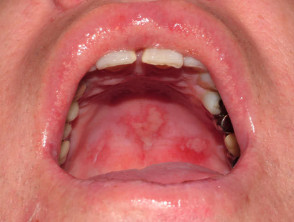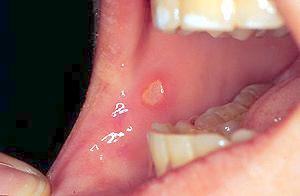
Aphthous ulcers are very common, affecting about 20% of the population. They typically begin during childhood and last for several years, then fade away without treatment. Major aphthae, on the other hand, are larger and deeper than minor aphthae. The latter type of aphthae can also cause fever, pain, and dysphagia.
Recurrent aphthous ulcers generally start as a yellow or white spot surrounded by a red halo. The ulcer breaks down into a punched-out form, with healthy tissue surrounding it. A single aphthous ulcer can be quite painful and may persist for two or four days. Eventually, new aphthous ulcers may form as old ones heal. Multiple aphthous lesions may appear as a single, circular, or pear-shaped lesion, which is classified according to its location.
Surgery is not a good option for canker sores. Although there is no known cure for canker sores, there are treatments that can help relieve pain and speed up the healing process. Using a barrier paste can reduce the amount of bacteria entering the affected area. Other alternative treatments include local anesthetics, zinc sulfate, nicotine, and the polio virus vaccine. Taking dietary supplements may also be helpful in treating other underlying conditions or deficiencies.
The most common treatment for canker sores is surgery, although there are other treatment options such as homeopathy. However, the most effective and proven treatment method is prevention and treatment. Surgical excision of aphthous ulcers is usually ineffective, and aphthous ulcers heal on their own. Use of topical steroids to control pain and speed up the healing process may be effective, but there is no cure for canker sores.
Apart from surgery, canker sores can be treated with an antiseptic mouthwash. Various antibiotics, including tetracycline, are also effective in treating canker sores. It is important to see a doctor for a diagnosis. A person may experience a sore and sore throat for the first few days, or it may last up to two weeks.

Aphthous ulcers may occur in the genital area on the vulva and surrounding skin. Symptoms are similar to those with oral administration, and aphthous ulcers are usually painful. Regardless of location, canker sores are a serious and unpleasant condition. The website sga.co.th lists treatments that can help relieve pain and speed recovery.
Although there are no systemic symptoms of aphthous ulcers, patients with this disease may experience painful and disfiguring mouth ulcers. The most common symptom is a raised, yellowish patch surrounded by a red halo. The ulcer is often covered with a loose membrane. The surrounding tissues are healthy. Depending on the type of aphthous stomatitis, the patient may experience multiple aphthous ulcers in the mouth. Apart from one or two ulcers, they can be divided into two types.
A doctor can diagnose aphthous ulcers through a patient’s history and physical examination. Surgical excision is not necessary since most lesions heal on their own without any treatment. Some alternative methods may include topical steroids, herbal remedies, and the polio virus vaccine. Other treatments are available as needed. The goal of aphthous ulcers is to reduce the pain and promote healing.
Aphthous ulcers are common, and symptoms usually begin during childhood and diminish as you age. Depending on the severity of the disease, patients may have a single aphthous ulcer and one or more ulcers throughout the mouth. The first aphthous ulcer is easily identifiable, while the second is less severe. A doctor may also notice multiple aphthous stoma, or a recurrent aphthous stomal stoma.
An aphthous ulcer is a type of oral ulcer. It is often caused by an autoimmune disease (SLE) or by stress. It is generally harmless and does not require treatment. The condition can be asymptomatic or recurrent. In addition to its pain and discomfort, aphthous ulcers are also contagious. The symptoms of aphthous ulcers depend on their location.



